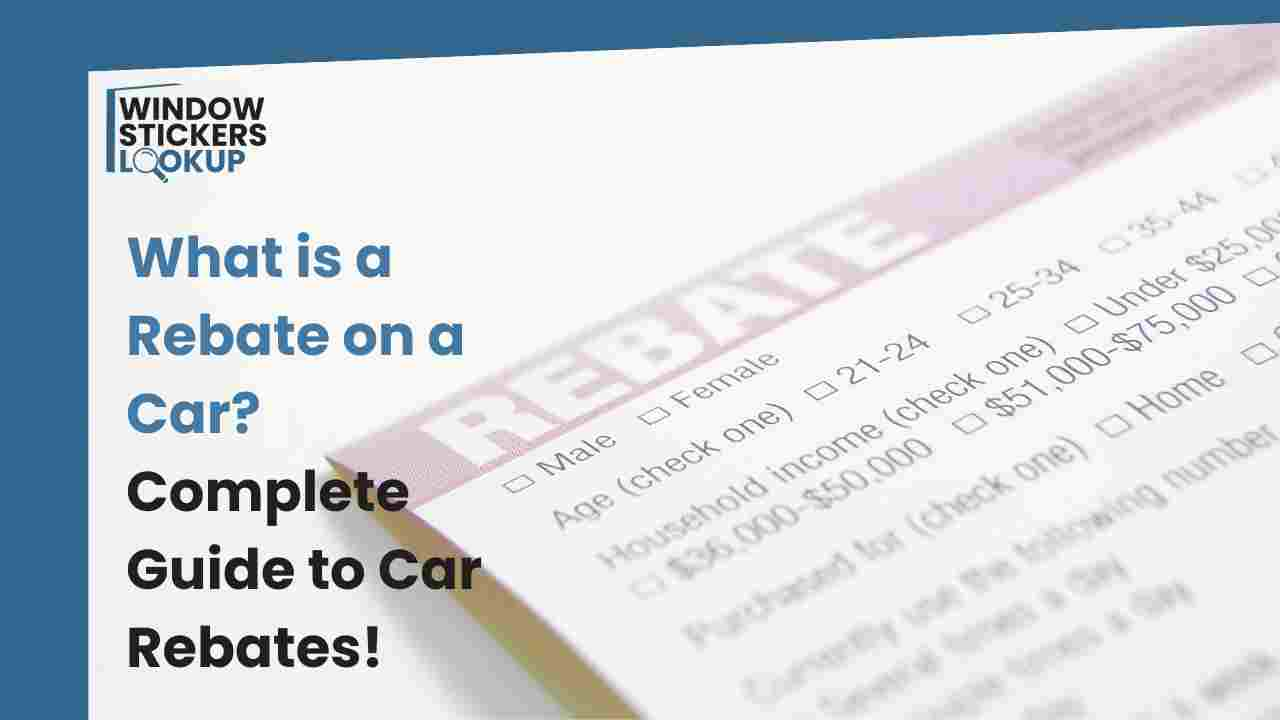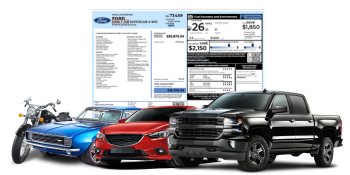A rebate on a car can save you money and make your purchase more affordable. Buying a car can feel overwhelming. You want to find the best deal, but there are so many options and costs to consider. Car prices can skyrocket, making it hard to stay within budget. Luckily, car rebates exist to help ease the financial burden.
In this article, we’ll explore what rebates are on cars, the different types available, and how they work to help you get the best deal on your next car.
RELATED: What Does a Car’s Out-the-Door Price Mean? | Everything You Need to Know
What is a Car Manufacturer Rebate?
A car manufacturer rebate is a discount offered directly by the car manufacturer. This rebate reduces the overall price of the vehicle, helping make a new car more affordable.
Manufacturers often provide these rebates to attract buyers. If a car isn’t selling well, the manufacturer might offer a rebate to boost sales.
These rebates come in many forms. Some may apply to specific models or trims, and others might be available only during promotional periods. It’s essential to check with the dealer to understand the current rebates.
Rebates can range from a few hundred to several thousand dollars. Typically, the amount depends on the model and market conditions. For example, a manufacturer might offer a $2,000 rebate on an SUV but only $1,000 on a sedan. This variance encourages buyers to consider different models.
When you look for a new car, always ask about manufacturer rebates. These discounts can significantly lower the final price.
How a Rebate on a Car Works
Understanding how rebates work can help you save money. When you buy a car, the dealer applies the rebate to the sale price. You usually see this reflected in your final paperwork.
Here’s how the process typically unfolds
- First, you find the car you want. Then, you negotiate the price with the dealer. After that, you should ask about any available rebates. If a rebate applies, the dealer subtracts it from the final sale price.
- Keep in mind that you may not receive the rebate in cash. Instead, it reduces the total amount you owe. For example, if the car costs $30,000 and there’s a $2,000 rebate, you’ll only pay $28,000.
- Rebates often work alongside financing offers or low-interest loans. Sometimes, you may have to choose between a rebate or special financing. Always consider which option benefits you more.
Eligibility of Car Rebates
Not everyone qualifies for every rebate. Factors like income, credit score, or location can impact eligibility.
- Income: Some rebates have income requirements. Most rebate programs from dealers target buyers with average annual income of $50k – $70k.
- Credit Score: Your credit score can play a role in rebate eligibility. Ideally, the best chances of rebate eligibility come with a credit score higher than 660 – the higher, the better.
- Location: Rebates can vary by city or state – so it’s best to always ask your dealer to confirm what’s available in your area.
Each dealership might have different rules, so always double-check. Stay informed and maximize those savings!
Other Types of Rebates
While manufacturer rebates are the most common, several other types exist. These rebates target specific groups of buyers or situations.
Loyalty rebates
Loyalty rebates reward customers who stay loyal to a brand. If you’ve owned a particular make of car before, you might qualify for this rebate.
Manufacturers appreciate loyal customers and want to keep them. For example, if you’ve previously owned a Ford and are buying another Ford, you may receive a loyalty rebate.
This rebate can be a nice incentive to stick with a brand you trust. It shows that manufacturers value customer loyalty and want to encourage repeat business.
Competitor rebates
Competitor rebates aim to attract customers from rival brands. If you own a car from a different manufacturer, you might receive a rebate for switching brands. For example, if you currently drive a Toyota and choose to buy a Honda, Honda may offer you a rebate to make the switch easier.
This strategy encourages competition among manufacturers and gives buyers a reason to explore new options and try out different vehicles.
Demographic rebates
Demographic rebates target specific groups based on criteria like occupation or age. Some manufacturers provide rebates for first responders, military personnel, or students. For instance, a company might offer a $500 rebate to active military members.
These rebates show that manufacturers want to support specific communities. They also provide buyers with an opportunity to save money if they fit the criteria.
Conclusion
Understanding what a rebate on a car is can significantly impact your car-buying experience. Knowing about manufacturer, loyalty, competitor, and demographic rebates can help you save money. Always ask about available rebates when you’re in the market for a car.
These discounts can reduce the overall price and make your purchase more manageable. With the right information, you can drive away in your dream car without breaking the bank.
Don’t forget to use the window sticker lookup by VIN tool. It’s a handy tool for finding window stickers for any car using the VIN or license plate number. This way, you can get all the details you need about a car, including the MSRP, fuel efficiency, and annual fuel cost, before making a purchase. Vintage car enthusiasts and collectors can consider the classic build sheet by VIN tool to get the build details of any classic car, including the base price, engine specs, transmission, colors, and more.









